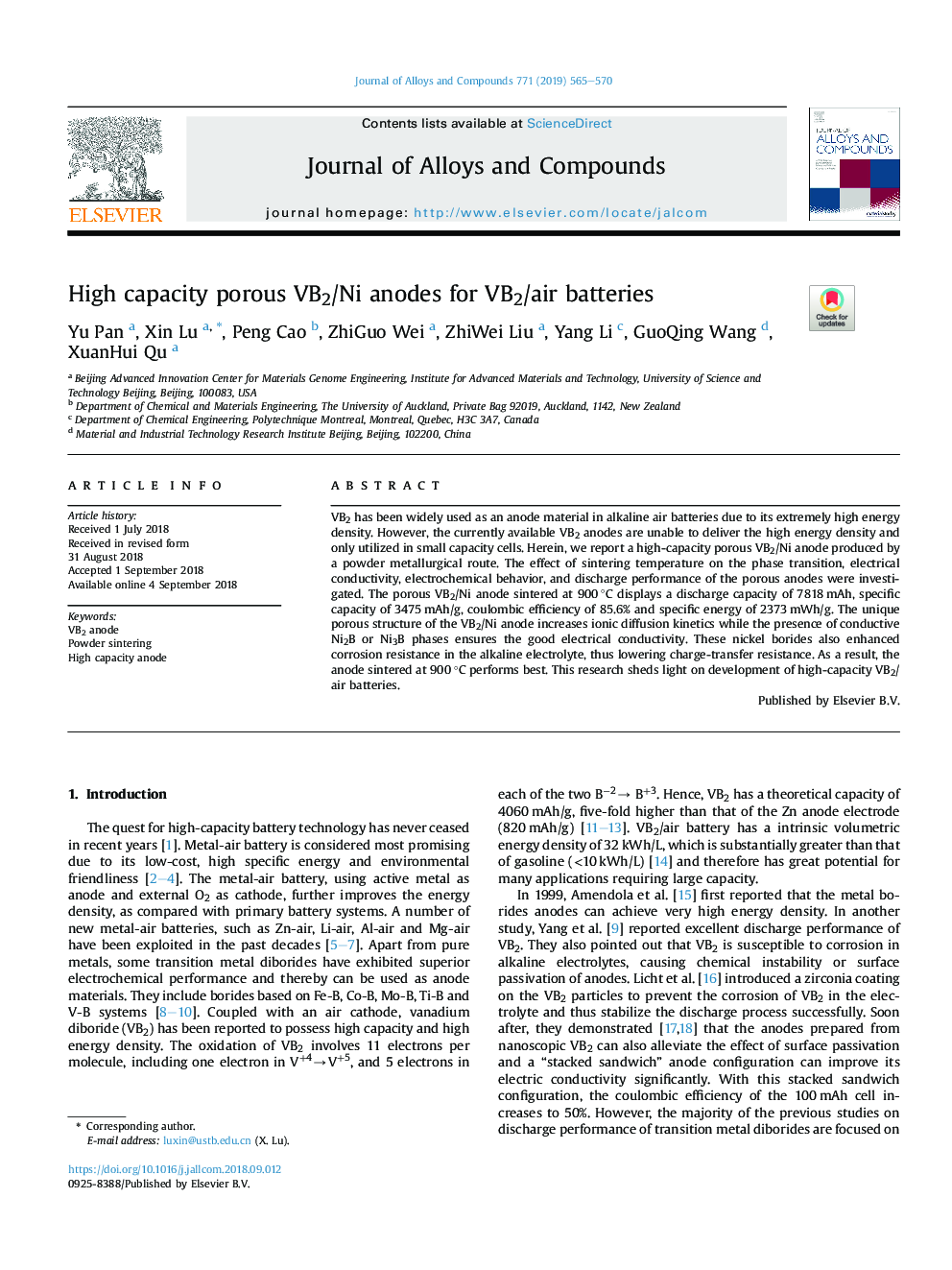| Article ID | Journal | Published Year | Pages | File Type |
|---|---|---|---|---|
| 10142207 | Journal of Alloys and Compounds | 2019 | 6 Pages |
Abstract
VB2 has been widely used as an anode material in alkaline air batteries due to its extremely high energy density. However, the currently available VB2 anodes are unable to deliver the high energy density and only utilized in small capacity cells. Herein, we report a high-capacity porous VB2/Ni anode produced by a powder metallurgical route. The effect of sintering temperature on the phase transition, electrical conductivity, electrochemical behavior, and discharge performance of the porous anodes were investigated. The porous VB2/Ni anode sintered at 900â¯Â°C displays a discharge capacity of 7818â¯mAh, specific capacity of 3475â¯mAh/g, coulombic efficiency of 85.6% and specific energy of 2373â¯mWh/g. The unique porous structure of the VB2/Ni anode increases ionic diffusion kinetics while the presence of conductive Ni2B or Ni3B phases ensures the good electrical conductivity. These nickel borides also enhanced corrosion resistance in the alkaline electrolyte, thus lowering charge-transfer resistance. As a result, the anode sintered at 900â¯Â°C performs best. This research sheds light on development of high-capacity VB2/air batteries.
Keywords
Related Topics
Physical Sciences and Engineering
Materials Science
Metals and Alloys
Authors
Yu Pan, Xin Lu, Peng Cao, ZhiGuo Wei, ZhiWei Liu, Yang Li, GuoQing Wang, XuanHui Qu,
